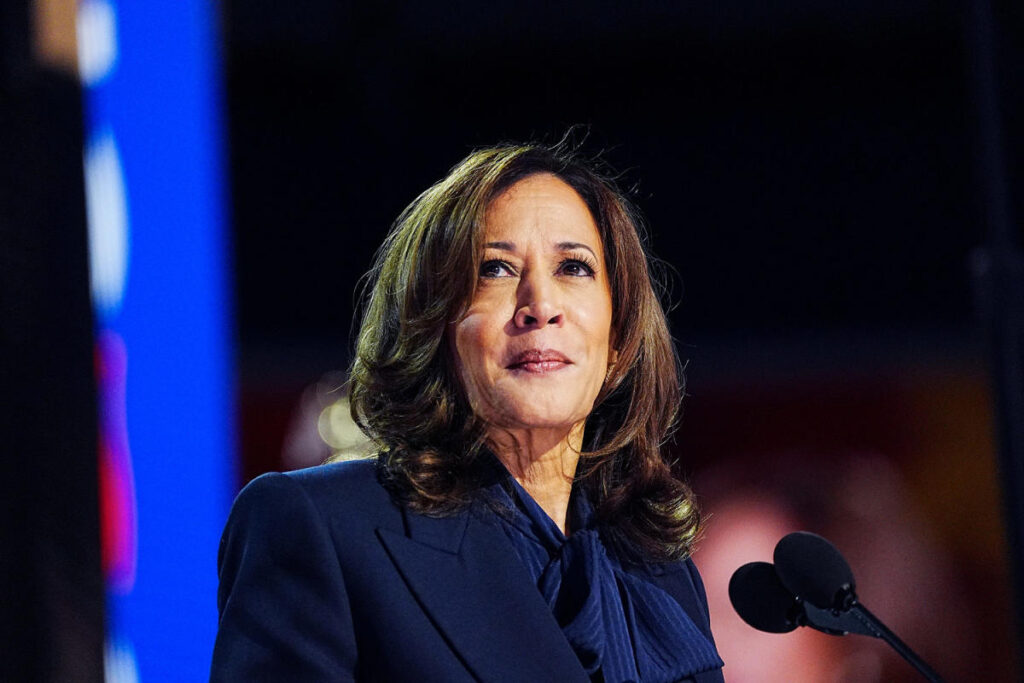Kamala Harris delivered a powerful rallying cry in Washington, urging Americans to “turn the page” on the turbulent Donald Trump era as she stood at the site where he addressed the mob on January 6. With the election just one week away, the Democratic nominee presented a critical view of her Republican opponent, labeling him as “unstable” and “consumed with grievance.” Harris emphasized her commitment to pragmatic governance and the importance of listening to those who may disagree with her. She recounted Trump’s intentions regarding the January 6 attackers, portraying him as a threat to democratic values and American citizens. Positioned on the Ellipse with a backdrop resembling future leadership, Harris framed her candidacy as a necessary shift toward unity and effective governance.
Making her case to thousands of supporters, Harris aimed to contrast her priorities with what she described as Trump’s “enemies list.” She articulated her vision focused on lowering costs for everyday Americans, highlighting fiscal policies like banning grocery price gouging and reducing costs for insulin and prescription drugs. Emphasizing her commitment to the working class, she pledged to prioritize tax cuts for the middle class and assist first-time homebuyers. These economic promises were crucial for her campaign, especially as recent polls indicated tight races in vital swing states. Harris recognized the need to discuss clear economic agendas to connect with voters who were skeptical of her previous positions.
As Trump sought to frame the election as a referendum on the Biden-Harris administration, blaming them for inflation and border issues, Harris confronted these attacks with a dual strategy. Although protests from pro-Palestinian activists momentarily tried to emphasize divisions within her own party, Harris focused on her message, portraying Trump’s approach as detrimental to the nation. The Republican National Committee quickly responded to her remarks, criticizing her as divisive and claiming that her policies had contributed to economic distress and insecurity. Such critiques highlight the charged rhetoric dominating the campaign landscape.
In her closing argument, Harris placed significant emphasis on Trump’s authoritarianism, enlisting support from anti-Trump Republicans to appeal to undecided voters. By highlighting comments from former officials who painted Trump as “authoritarian” and “fascist,” she aimed to draw clear distinctions between her vision for America and Trump’s candidacy. This strategy not only reinforced her message but also attempted to resonate with moderates and independents who may fear Trump’s leadership style. As she navigated the complexities of stepping in as the lead candidate after Biden’s late withdrawal, Harris worked diligently to establish her distinct voice while addressing economic concerns in parallel with her anti-Trump sentiment.
Harris’s campaign has been strategically shaped by the necessity to campaign rapidly and effectively, with a focus on providing a clear narrative that defines her and counters Trump’s claims. The Democratic messaging has required balancing concerns regarding the economy with ongoing reminders of the events that transpired on January 6. Recent testing of various messaging strategies indicated that anti-Trump messages aligning with economic concerns were most effective with pivotal voters. The campaign’s goal was to portray Harris as a viable and hopeful alternative to Trump, attempting to bolster her image in a short timeframe while asserting her legitimacy as a candidate.
Throughout her address, Harris emphasized her commitment to honesty, listening to constituents, and prioritizing compromise to resolve issues. She acknowledged her imperfections but aimed to promote a narrative of accountability and action in contrast to what she ascribed to Trump’s leadership style. By projecting optimism grounded in practical plans, she hoped to inspire confidence in her potential presidency while rallying support for the Democratic platform. Her speech at the Ellipse encapsulated her broader campaign strategy, combining elements of economic promise with a stark warning against a return to Trumpian politics, underlining her readiness to lead a new generation in American governance.

